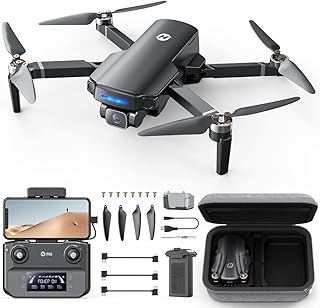Drones in Education: Engaging Students and Expanding Learning Opportunities
Drones, once seen as futuristic gadgets, are rapidly becoming powerful tools in education, revolutionizing learning experiences and opening up exciting new possibilities. Here's a look at how drones are engaging students and expanding educational opportunities:
Engaging Students & Fostering Interest:
* Hands-on Learning: Drones offer a tangible, interactive learning experience, capturing students' attention and fostering a deeper understanding of concepts. Building, programming, and flying drones provide a practical application for STEM subjects, making abstract theories come to life.
* Problem-Solving & Critical Thinking: Designing drone flight paths, analyzing data captured by drone cameras, and troubleshooting technical issues all promote critical thinking and problem-solving skills.
* Collaboration & Teamwork: Group projects involving drones encourage collaboration, communication, and shared responsibility, enhancing teamwork skills.
* Real-World Applications: Drones are increasingly used in various industries, from agriculture and construction to environmental monitoring and disaster relief. Introducing students to these real-world applications makes learning relevant and exciting.
Expanding Learning Opportunities:
* STEM Education: Drones provide a dynamic platform for teaching and learning STEM concepts like physics, engineering, coding, and data analysis.
* Geography & Environmental Studies: Drones equipped with cameras can capture stunning aerial images and videos, enabling students to explore geographical features, observe wildlife, and analyze environmental changes.
* History & Archaeology: Drones can be used to map and document historical sites, providing valuable insights into past civilizations and events.
* Arts & Media: Drones offer new perspectives for filmmaking, photography, and storytelling, empowering students to create innovative and engaging content.
Challenges & Considerations:
* Safety: Implementing drone programs requires strict safety protocols, including proper training, licensing, and designated flight zones.
* Cost & Accessibility: Acquiring and maintaining drones can be expensive, limiting accessibility for some schools and students.
* Privacy & Ethics: Students and educators must be mindful of privacy concerns and ethical considerations when using drones for data collection and filming.
* Regulation & Laws: Understanding and adhering to local and national drone regulations is crucial for responsible drone operation.
Moving Forward:
* Teacher Training: Investing in training programs for teachers to develop drone skills and integrate them effectively into curriculum is essential.
* Community Partnerships: Collaborating with local organizations, businesses, and universities can provide access to resources, expertise, and real-world applications.
* Open-Source Platforms: Utilizing open-source drone technology and platforms can reduce costs and encourage innovation.
Conclusion:
Drones offer a compelling opportunity to engage students and expand learning opportunities across various subjects. By addressing challenges and fostering responsible use, drone technology can empower students, enhance education, and prepare them for the future.


